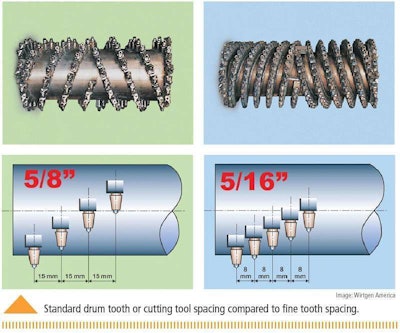
In just over three decades, asphalt cold milling equipment, also called planers or grinders, has matured in terms of durability, complexity and choice of makes and models.
Operators are under pressure to get the best performance out of their cold mills in terms of consistency of milling pattern, correct grade and slope, cleanliness of cut, consistency of millings and cost-effective use.
That’s in addition to their obligation to maintain uptime for an expensive and critical piece of mobile equipment used in an extremely abrasive application. If a cold mill goes down on a job, it can result in substantial project cost overruns and even nightmarish disincentive payments for failure to complete a critical time-sensitive job on schedule.
The milling drum, or mandrel, is the heart of the cold milling sequence. It’s the axis around which the entire milling process revolves. A well-designed and well-maintained cutter drum will help the operator in his mission.
“Cutter technology and the way they build the drums is much more advanced than in past years,” says Jeff Wiley, senior vice president of Wirtgen America. “A drum is built today to nearly the same precision as a fine Swiss watch.The drums are all turned using laser technology. When these drums are assembled new, they are spot-on, with no chance for error.”










